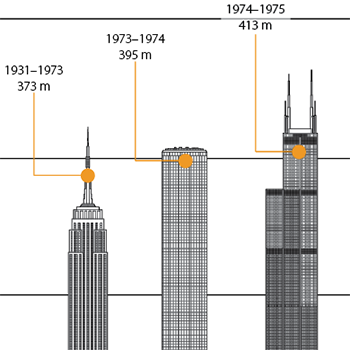Filter by
You must be a CTBUH Member to view this resource.

CN Tower
Canadian National Tower
Tower
Completed
1976
Telecommunications / Observation / Retail
All-Concrete
553.3 m / 1,815 ft
9
6.1 m/s
Proposed
Construction Start
Completed
Retrofit End
Material Supplier refers to organizations which supplied significant systems/materials for a building project (e.g. elevator suppliers, facade suppliers, etc).
You must be a CTBUH Member to view this resource.
Usually involved in the front end design, with a "typical" condition being that of a leadership role through either Schematic Design or Design Development, and then a monitoring role through the CD and CA phases.
The Design Engineer is usually involved in the front end design, typically taking the leadership role in the Schematic Design and Design Development, and then a monitoring role through the CD and CA phases.
Material Supplier refers to organizations which supplied significant systems/materials for a building project (e.g. elevator suppliers, facade suppliers, etc).
The Design Engineer is usually involved in the front end design, typically taking the leadership role in the Schematic Design and Design Development, and then a monitoring role through the CD and CA phases.
Other Consultant refers to other organizations which provided significant consultation services for a building project (e.g. wind consultants, environmental consultants, fire and life safety consultants, etc).
29 October 2015 - Event
17 September 2015 - Event

24 August 2015
CTBUH Research
Perhaps no element of a tall building is more closely related to the pure pleasure of standing high in the sky and taking in the...
World's tallest self-supported structure 1976 - 2010.

24 August 2015
CTBUH Research
Perhaps no element of a tall building is more closely related to the pure pleasure of standing high in the sky and taking in the...

01 June 2012
CTBUH Research
With the recent completion of two megatall telecommunication/observation towers it is perhaps time to review these structures and also explain why they are distinguished from...

13 November 2010
CTBUH Research
Includes records of the tallest buildings/structures according to function and structural material, the highest spaces according to function, and some lesser-known titles such as the...
30 October 2015
CTBUH 2015 delegates toured Toronto under the lead of CTBUH Canada. The highly successful tour led to many discussion on the lessons learned.
17 September 2015
The CTBUH Urban Habitat / Urban Design Committee organized guided walking tours of 16 cities around the globe, focusing on urban habitats around tall buildings.
Subscribe below to receive periodic updates from CTBUH on the latest Tall Building and Urban news and CTBUH initiatives, including our monthly newsletter. Fields with a red asterisk (*) next to them are required.
View our privacy policy